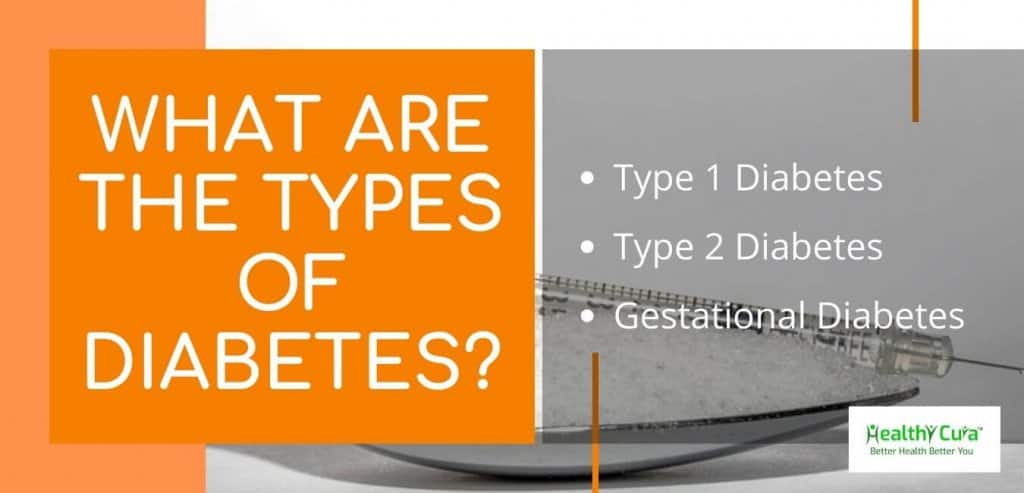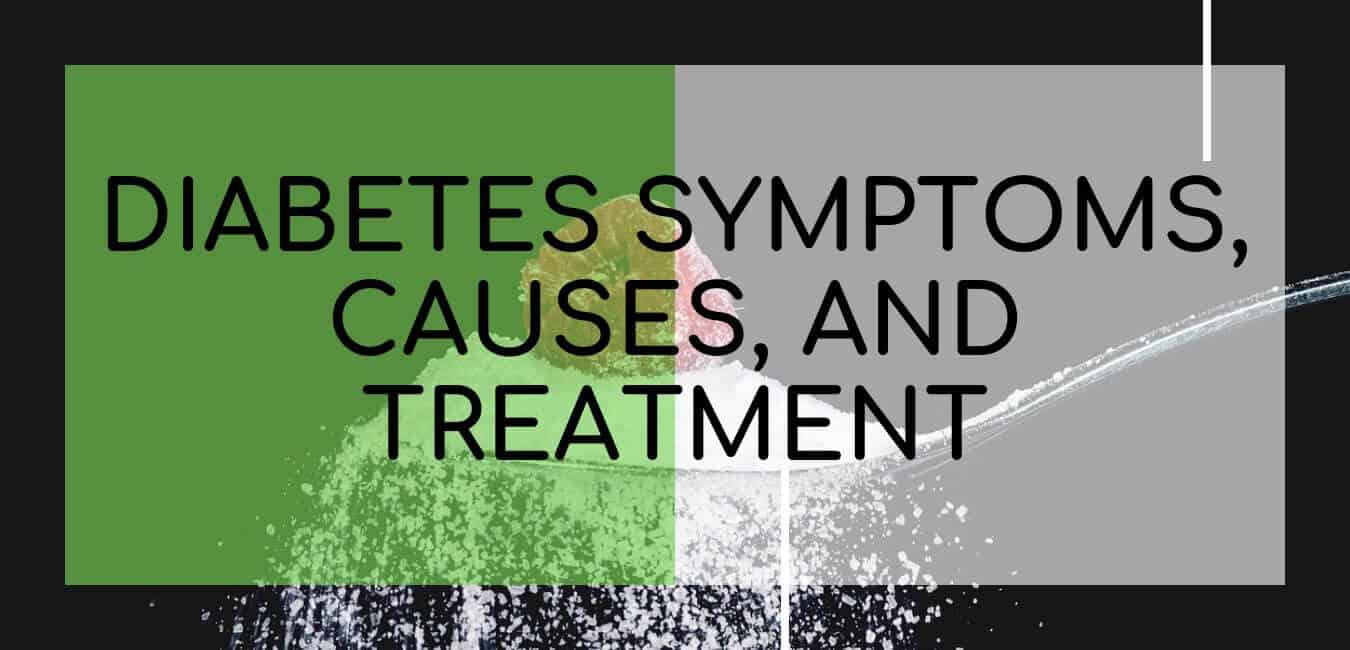If you are seeing this page that means either you are suffering from diabetes or you are searching on diabetes for someone special!
Because diabetes is the most common disorder affecting worldwide. According to the WHO, 422 million people have been diagnosed with diabetes in 2014, mainly in developing countries. (1)
We know there are lots and lots of questions are boggling in your mind regarding diabetes. So, let us help you out with a basic overview of diabetes. This article is going to cover all the basic aspects of diabetes that includes:
- What is diabetes?
- What are the types of diabetes?
- What is Type 1 diabetes?
- What is Type 2 diabetes?
- What is the role of Insulin?
- What are the risk factors of diabetes?
- What are the symptoms of diabetes?
- What are the causes of diabetes?
- What are the complications related to diabetes?
- How to diagnose diabetes?
- How to prevent diabetes?
- What is the treatment for diabetes?
- What are the medications for diabetes?
So, no further waiting, let’s get started with our article on the overview of diabetes.
What is Diabetes?

Diabetes is probably one of the oldest diseases was first described in an Egyptian document about 3000 years ago.
Diabetes is also known as diabetes mellitus which is a mixture of heterogeneous disorders usually presenting with episodes of a low level of blood sugar or high level of blood sugar due to lack of insulin, defective insulin action, or both.[2]
The body either does not produce enough insulin or can’t use the body’s own insulin when you have diabetes.
This causes blood sugar to build up. Diabetes can result in serious health problems, which includes heart-related problems, loss of vision, renal problems, weight loss and amputations with lower extremities.[1] Diabetes can also affect your gums and teeth if you are suffering from diabetes.
Now you are wondering what is Insulin? So, let us tell you some information on Insulin.
Insulin
Insulin is one type of natural hormone forms in the body. It is produced by the β cells of the pancreas which maintain the normal level of blood sugar in the body.[3]
It allows body cells to utilize the glucose present in the blood.
In other words, insulin is the gatekeeper of cells which allow the entry of glucose inside the body cells to utilize it and produce energy.
Diabetes Types
According to Sicree et al., 2006[4], types of diabetes are:
- Type 1 diabetes
- Type 2 diabetes
- Gestational diabetes

Type 1 Diabetes
What is Type 1 diabetes?
Type 1 diabetes is also known as:
- Insulin-dependent diabetes
- Insulin-dependent diabetes mellitus
- IDDM
- Juvenile diabetes
- Autoimmune diabetes
Earlier it was said that type 1 diabetes is mainly seen in children and adolescents but now there is evidence which suggests that age at symptomatic onset is no longer a confining factor as it is seen in adult also.[5]
In type 1 diabetes, body organ pancreas fails to produce insulin.
As said earlier, insulin is a must for glucose to enter into the body cells.
So, there is no insulin so no entry of glucose inside body cells which causes an increase in glucose level in the blood and so the diabetes type 1.
Type 1 diabetes can be diagnosed at any age but it is one of the most common long-standing types of diabetes of children mainly happen between 5–7 years of age and at or near puberty. [6,7]
According to the American Diabetes Association (ADA), 1.25 million Americans are suffering from type 1 diabetes and they assume that 40,000 people will be diagnosed with type 1 diabetes in the year 2019.[8]
Type 2 Diabetes
What is Type 2 diabetes?
Type 2 diabetes is also known as:
- Non-Insulin dependent diabetes
- Non-Insulin dependent diabetes mellitus
- NIDDM
- Adult diabetes
In this type of diabetes, the body fails to utilize the insulin though insulin is sufficiently present in the body.
According to WHO, type 2 diabetes is the majority type of diabetes in the world.[1]
It is said that by 2030, 439 million people would have type 2 diabetes.[9]
Symptoms of type 1 diabetes and type 2 diabetes we will discuss it later in the section what are the symptoms of type 1 diabetes and symptoms of type 2 diabetes? below.
Gestational Diabetes
What is gestational diabetes?
Gestational diabetes is the most communal medical problem of pregnancy.[10]
In gestational diabetes, it is important to maintain the blood sugar level normal to prevent getting diseased for both the mother as well as the baby.
According to the American Diabetes Association (ADA), around 10 per cent of pregnant ladies in the U.S. are suffering from gestational diabetes every year.[8]
Before going on symptoms of diabetes, we hope that you have now better understand what is diabetes? What are the types of diabetes? What is diabetes type 1 and diabetes type 2?
Risk Factors for Diabetes
Knowing risk factors for diabetes is the most important thing as diabetes is most commonly affecting worldwide and its incidences, as well as death rate, is higher compared to other diseases.
Therefore, having knowledge about the risk factors of diabetes may prevent diabetes.
According to the International Diabetes Federation, it is assessed that 366 million people had diabetes and caused 4.6 million deaths in 2011.
As per the International Diabetes Federation, estimates India would be on the first position with a diabetes population of 151 million by 2045.[11]
Risk Factors for Type 1 Diabetes
Diabetes type 1 risk factors include:
Family History
Having type 1 diabetes in the family, either parents, grandparents or siblings, put you at risk of having type 1 diabetes.
If your mom and dad, both have type 1 diabetes than you are at higher risk of getting type 1 diabetes.
Age
Juvenile diabetes mainly affects the children and adolescent, but it may affect you at any age. Mostly children ageing from 5-14 years may get affected by diabetes type 1.
Genes
Autoimmune diabetes is said for type 1 diabetes because body genes play an important role in causing diabetes type 1.
There are certain genes which are associated with autoimmune diabetes.
Risk Factors for Diabetes Type 2
Diabetes type 2 risk factors include:
Family History
Again, if any person from your family is having diabetes you are at risk of getting diabetes, either type 1 diabetes or type 2 diabetes. But getting type 2 diabetes is more common.
Gender
Males are more commonly affected by type 2 diabetes than female.
According to one study done in Bengaluru, India, the percentage of males diagnosed with diabetes type 2 was 55.68% compared to the female which was 44.12%.[12]
Age
Being more than 45 years, you are at risk of getting diabetes.
Obesity
An obese or overweight individual is more prone to getting diabetes.
Physical Activity
A person with less physical activity has a higher chance of having diabetes.
Diabetes Symptoms Type 1 & Type 2
Diabetes is not considered as a serious problem because the effects of hyperglycaemia do not present themselves spontaneously, as is the case in many other diseases.
People do not know that the harm will begin several years prior to noticeable symptoms. Thankfully, the recognition of early symptoms can help to control and prevent vascular complications of diabetes immediately.[18]
You must consider the warning signs of diabetes.
| WARNING SIGNS OF DIABETES[18] |
| Unexplained weight loss |
| Getting fatigue |
| Repeated infection mostly urinary tract infection, skin infection, dental and gums infection (Periodontitis) |
| Delay in wound healing |
| Dryness of mouth |
| Numbness in feet |
| Decreased eye vision |
| Impotence or erectile dysfunction |
Type 1-diabetes, with rapid growth with extreme hyperglycaemia and type 2 diabetics with very high levels of hyperglycaemia is often the classic symptoms of diabetes, including polyuria (production of unusually excessive amount of urine), polydipsia (frequent thirst), and polyphagia (excessive eating).[18]
Severe loss of weight is only mainly associated with diabetes type 1 or when the type 2 diabetes is untreated for a long time.[18]
Unexplained weight loss, tiredness and restlessness, and body pain are frequent signs of undetermined diabetes.[18]
What are the causes of Diabetes?
Causes of Type 1 Diabetes
Causes of type 1 diabetes are still unknown but it is mainly due to the autoimmune destruction of β cells produced by the pancreas by the body results in diabetes type 1.
Type 1 diabetes is also associated with some genes.
Causes of Type 2 Diabetes
Type 2 diabetes is primarily linked to obesity and lifestyle.
Obese persons have resistance by body cells to insulin.
Causes of Gestational Diabetes
Gestational diabetes is seen in pregnancy because of hormonal changes. Obese or overweight mothers are more susceptible to gestational diabetes.
What are the complications of Diabetes?
Complications of diabetes chiefly divided into three class:
Microvascular complications of diabetes
- Diabetic neuropathy[13]
- Diabetic nephropathy[13]
- Diabetic retinopathy[13]
Macrovascular complications of diabetes
- Heart disease[14]
- Heart stroke[14]
- Peripheral artery disease (PAD)[14]
- Diabetic foot syndrome[14]
Other complications of diabetes
- Skin infections[13]
- Hearing impairment[13]
- Alzheimer’s disease especially in type 2 diabetes[13]
- Dental problems[15]
- Less fighting to infection[15]
- Birth complications in the event of gestational diabetes[15]
Diagnosis of Diabetes
Diabetes can be diagnosed with some laboratory tests.
Diabetes test includes:
- Fasting plasma glucose level[8]
- Random plasma glucose level[8]
- A1c test or HbA1c test
- Oral glucose tolerance test[8]
Prevent Diabetes
Diabetes can be prevented by doing some changes in your daily lifestyle.
- Control your weight. If you are obese then you must lose your weight by doing weight loss diet and weight loss exercises.
- Take diet best for diabetes
- Stop smoking
- Avoid alcohol consumption
- Do routine exercises and yoga
- A regular check-up with the doctor
You can follow the below dietary guidelines for diabetes[16]:
You must do some adjustment in your diet to prevent diabetes[16]:
- Eat more fruits and vegetables
- Avoid non-vegetarian food
- Increase the intake of fruits and vegetables high in fibres
- Have a low-fat diet
- Avoid vegetable oil and high-fat diet
- Reduce the intake of salt
- Avoid caffeine
- Avoid sweets
Person with Uncontrolled Diabetes
It’s quite dangerous when having uncontrolled diabetes.

Uncontrolled diabetes for a shorter time can lead to [16]
- Fatigue
- Thirst
- Frequent urination
- Blurred vision
Whereas uncontrolled diabetes for a long time can lead to [16]
- heart disease
- kidney disease
- loss of vision
- nerve damage
Medications for Diabetes
If you are suffering from diabetes, generally your physician or diabetologist, will prescribe either oral medications or injectable medications.
Oral medications for diabetes[17]
- Metformin
- Insulin secretagogues
- Sulfonylureas and meglitinides
- Alpha-glucosidase inhibitors
- Acarbose
- Miglitol
- Voglibose
- Thiazolidinediones
- Rosiglitazone
- Pioglitazone
- Dipeptidyl peptidase-4 inhibitors
- Sitagliptin
- Vildagliptin
- Saxagliptin
- Linagliptin
- Alogliptin
- Sodium glucose co-transporter-2 inhibitor
- Dapagliflozin
- Canagliflozin
- Empagliflozin
Injectable medications for diabetes[17]
- Human GLP1
- Exenatide
- Lixisenatide
- Liraglutide
- Exenatide LAR
- Albiglutide
- Dulaglutide
- Insulin
Conclusion
With active lifestyle alterations including weight loss, implementation of a healthy diet along with physical activity, are the keystone in the prevention of diabetes, especially for the high-risk individuals.
We hope that you have got all the required basic information on diabetes here.






















